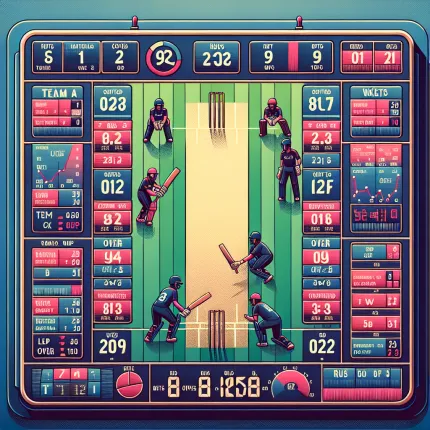Have you ever paused to admire a beautifully crafted sign on a bustling street, or found yourself mesmerized by the intricate flow of a tattoo’s script? What transforms simple words into captivating visual experiences is the art of lettering. In a world saturated with digital fonts and mass-produced text, lettering breathes life back into words, turning them into unique pieces of art. From the elegant loops of a cursive s to the subtle strokes of a cursive i, lettering is more than just writing—it’s a creative revival of typography that connects us to the power and personality of language in fresh, imaginative ways.
When Typography Feels Flat: The Challenge of Digital Fonts
Let’s face it: we live in an era where fonts are everywhere, and often, they’re painfully uniform. The ease of digital typefaces means many brands, artists, and individuals rely heavily on pre-made fonts that, while practical, can feel cold or uninspired. The distinctiveness that once came from hand-drawn letters seems to be fading into the background noise of the internet and printed media. This is where many stumble—how can you make a message stand out when every letter looks like it’s been stamped out of a cookie-cutter?
Consider the cursive s and cursive i, two letters that can either blend into the crowd or become the signature flourish that defines a piece of lettering art. In regular fonts, these letters often lose their character, but when illustrated by hand, they dance and twirl with personality, capturing attention and evoking emotion. When your message is reduced to mere words on a screen, you risk losing the emotional connection that beautifully crafted lettering can provide.
Why Does This Matter?
Words are more than just carriers of information—they are vehicles for expression and identity. When you look at a tattoo, a neon sign, or a handcrafted poster, the lettering style tells a story beyond the literal meaning of the words. The right curves, angles, and flourishes—like a swooping cursive s or a playful cursive i—can invoke nostalgia, excitement, elegance, or rebellion.
Without that artistry, text can feel flat, impersonal, and forgettable. It’s this loss of human touch and creativity that has many artists and designers yearning for a renaissance—a comeback for lettering as a dynamic, expressive form of art.
Lettering: Reimagining Typography through Artistic Expression
Fortunately, the creative community has responded with a resurgence in hand lettering, a practice that transforms words into visual masterpieces. Lettering isn’t just about choosing a font; it’s about crafting each letterform intentionally, with an artist’s eye for balance, rhythm, and emotion. It’s about taking the cursive s and cursive i and making them sing—turning them into brushstrokes that breathe life into every word.
- Signs and Murals: Cities around the world are now canvases for stunning lettering art. From vintage-style shop signs to bold, colorful murals, artists are reclaiming public spaces with text that commands attention and invites interaction.
- Tattoos: Personalized lettering in tattoos is more popular than ever. The artistry involved in shaping each letter ensures that the wearer’s message is as unique as their story, with every cursive s or i tailored to complement the skin’s natural flow.
- Brand Identities: Businesses are moving away from generic fonts to custom lettering that reflects their values and personality, creating logos and packaging that feel authentic and memorable.
What’s truly exciting is how lettering bridges tradition and innovation. It draws on centuries of calligraphy and typographic history but is continually reinvented by contemporary artists who experiment with styles, tools, and digital techniques. This fusion creates a visual language that’s both timeless and fresh.
What You’ll Discover in This Article
In the sections that follow, we’ll explore how lettering is reshaping the way we see and interact with words. We’ll delve into:
- The history and evolution of lettering art, highlighting its roots and modern transformations.
- Techniques and styles that bring lettering to life, including the subtle artistry behind cursive s and cursive i.
- Real-world applications—from signage to tattoos—that showcase lettering’s versatility and power.
- Tips for incorporating lettering into your own projects, whether you’re a designer, artist, or enthusiast.
Whether you’re someone who appreciates the beauty of letterforms, a creative looking to deepen your craft, or simply curious about why lettering is making such a strong comeback, this article will offer fresh insights and inspiration. Prepare to see words in a new light—where every stroke matters and every letter tells a story.

Lettering Art: Typography’s Creative Revival
Lettering art has experienced a significant resurgence in recent years, transforming words from mere communication tools into captivating visual expressions. This creative revival in typography not only enriches graphic design but also brings unique artistic value to everyday objects—from signs and posters to tattoos and digital media.
What Is Lettering and How Does It Differ from Typography?
Lettering refers to the art of drawing letters by hand, where each character is crafted as a unique illustration rather than typed from a font. Unlike typography, which utilizes pre-designed typefaces and fonts, lettering allows complete creative freedom in shaping each letterform to fit a specific message or aesthetic.
This distinction explains why lettering has become so popular in branding and artistic projects. It offers a personal, handcrafted feel that machine-generated typography often lacks. For example, a tattoo artist creating a custom design with a cursive s or cursive i can emphasize fluidity and emotion, making the piece deeply personal and visually dynamic.
Why Has Lettering Seen a Creative Revival?
The revival of lettering is rooted in a broader cultural shift valuing authenticity and individuality. Several factors contribute to this trend:
- Digital Saturation: With the ubiquity of digital fonts, people crave unique visuals that stand out, leading to increased demand for hand-crafted lettering.
- Social Media Influence: Platforms like Instagram and Pinterest showcase lettering artists’ work, inspiring more designers and hobbyists to explore this craft.
- Customization in Branding: Brands now seek distinctive logos and packaging that leverage custom lettering to create memorable identities.
- Revival of Traditional Skills: Calligraphy and hand-lettering workshops have gained popularity, preserving and evolving historical techniques.
How Does Lettering Transform Words into Visual Art?
Lettering transforms words into visual art by focusing on the form, style, and arrangement of each letter. Here’s how this process unfolds:
- Conceptualization: Understanding the message, tone, and context guides the letterforms’ style—whether bold, elegant, playful, or vintage.
- Sketching: Artists draft letters by hand, experimenting with shapes, flourishes, and connections, especially in cursive s and cursive i, which can add graceful flow and personality.
- Refinement: Details such as stroke thickness, spacing, and embellishments are fine-tuned for balance and readability.
- Finalization: The artwork may be digitized for use in various media, ensuring scalability while preserving the handcrafted essence.
For example, a sign painter might use lettering techniques to craft a vintage-style storefront sign where every letter tells part of the brand story, while a tattoo artist uses flowing cursive s and cursive i forms to create intimate, meaningful designs on skin.
Common Challenges and Tips When Practicing Lettering
Beginners often face challenges such as maintaining consistent letter proportions, spacing, and fluidity—especially with cursive letters like s and i, which require smooth curves and connections. Here are some tips to overcome these:
- Practice Basic Strokes: Master the fundamental strokes before combining them into letters to build muscle memory.
- Use Guidelines: Draw baseline, x-height, and ascender/descender lines to keep letters aligned and proportionate.
- Study Letter Anatomy: Understand the structure of letters, including how cursive s and cursive i differ in flow and form compared to block letters.
- Experiment with Styles: Try various lettering styles to find what resonates, such as serif, sans-serif, script, or decorative forms.
- Leverage Digital Tools: Use software like Procreate or Adobe Illustrator to refine sketches and create vector versions of your lettering art.
Real-Life Examples of Lettering Impact
Lettering’s creative revival can be seen across multiple industries and applications:
- Signage: Iconic signs like the Coca-Cola logo use custom lettering to create brand recognition that’s timeless.
- Tattoos: Custom lettering transforms personal expressions into permanent body art, with cursive s and cursive i often used for names or quotes.
- Packaging: Artisan products increasingly use hand-lettered labels to convey authenticity and craftmanship.
- Advertising: Campaigns employ unique lettering to capture attention and evoke emotion.
Common Questions About Lettering Art
Is Lettering the Same as Handwriting?
Not exactly. Handwriting is the natural, often informal way a person writes, while lettering is a deliberate artistic process where each letter is designed as a visual element. Lettering may mimic handwriting styles but focuses on aesthetics and composition.
What Is the Importance of Letters Like Cursive S and Cursive I in Lettering?
Cursive letters such as s and i play a crucial role in creating fluidity and elegance within lettering compositions. Their distinctive loops and strokes can add rhythm and style, making the overall design more harmonious and visually appealing.
How Can I Start Learning Lettering?
Begin with basic tutorials focusing on letter shapes and strokes. Practice letters individually—pay special attention to challenging forms like cursive s and cursive i. Join online communities, watch workshops, and experiment with different tools like brush pens and digital tablets.
Conclusion
Lettering art represents a dynamic fusion of creativity, craftsmanship, and communication. Its revival underscores a cultural desire for authenticity and personal expression in a digital age. By mastering lettering techniques—including the elegant forms of cursive s and cursive i—artists and designers can transform simple words into compelling visual stories that resonate across signs, tattoos, and beyond.




